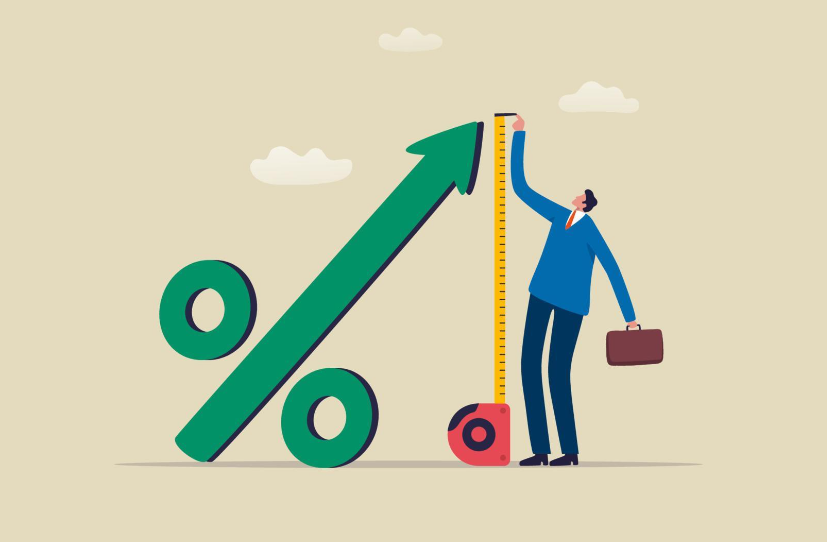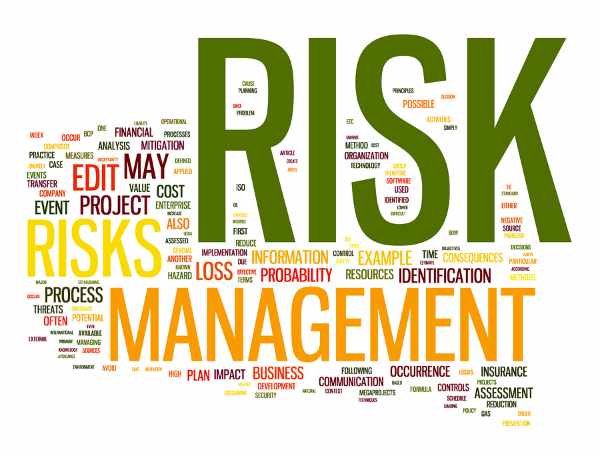Should A Trader Measure Profits In Percentages, Pips Or Risk/Reward (R)?
 Today’s article is about a seemingly obvious concept; how to measure trading profits. Yet, most traders start out measuring their profit (and loss) totally wrong, but it’s really not their fault. Conventional thinking and what is typically spread on the internet or recommended by brokers and even in many books, just isn’t how actual professional traders think about measuring trading performance or managing risk (they go hand-in-hand).
Today’s article is about a seemingly obvious concept; how to measure trading profits. Yet, most traders start out measuring their profit (and loss) totally wrong, but it’s really not their fault. Conventional thinking and what is typically spread on the internet or recommended by brokers and even in many books, just isn’t how actual professional traders think about measuring trading performance or managing risk (they go hand-in-hand).
Hence, today, I want to give you a real-world lesson which is probably not what you have read or heard elsewhere, on how to properly measure your trading performance and risk in the market. After all, this is a pretty core-component to your trading career, and if you don’t have this part down how can you expect to actually make money in the market? I think you agree.
As you know if you’ve followed my blog for any length of time, I am primarily a swing trader and that is the style of trading we focus on here and that I teach my students. Why is that important? Well, because depending on how you are trading, you will want to measure your profits differently, and for swing traders like you and I, there is one way to measure profits that is clearly more logical and simply “better” than the rest.
However, before we get into how I measure risk and reward as I trade the markets, let’s be fair and transparent and go over the three primary ways traders measure this. We will discuss each of them and then I will explain which one most professional traders focus on, and why.
The 3 Primary Means of Measuring Profits:
- The “2%” Method – A trader picks a percentage of their account to risk per trade (usually 2 or 3%) and sticks with that risk percentage no matter what. The basic idea here is that as a trader wins, they will gradually increase their position size in a natural way relative to account size. However, what usually happens is traders lose (for a number of reasons discussed in my other articles, check out this lesson on why traders fail for more), and then they are stuck trading smaller and smaller position sizes due to the 2% rule (the 2% means less money risked as you lose), making it harder just to get back to their starting amount, let alone actually make money!
- Measuring Pips or Points – A trader is focused on pips or points gained or lost per trade. We aren’t going to focus much on this method because it is so ridiculous. Trading is a game of winning and losing money, not points or pips, so the idea that focusing on the pips will somehow improve your performance by making you less aware of the money, is just silly. You will always be aware of the money, no matter what. Only by properly controlling your risk per trade can you control your emotions, and that means you need to know what you are risking per trade in monetary form (dollars, pounds, yen, etc).
- Measuring based on “R” or Fixed $ Risk – A trader predetermines how much money they are comfortable with potentially losing per trade and risks that same amount on every trade until they decide to change that dollar amount. The dollar amount they are risking per trade is known as “R” where R = Risk. Reward is measured in multiples of Risk, so a 2R reward is 2 times R, etc. Yes, there is some discretion involved with this method, but honestly, discretion and gut feel in trading is a big part of what separates the winners from the losers. I will explain more as you read on…
Fact: Size doesn’t matter.
A recent study I read on what women thought was the most important feature of a man…joking! Lol. Seriously though…
Risk per trade has to be a deeper thought process, it has to be personal based on circumstances and the entire risk profile and financial position of the trader. For example:
Trader A who risks 2% of his $5,000 account his totally different life circumstances (finances, etc.) than Trader B who would also risk 2% of his $5,000 account, as suggested by the 2% rule.
Now, answer me this: Why on Earth would two TOTALLY DIFFERENT INDIVIDUALS RISK THE SAME PERCENTAGE of their trading accounts when the actual amount of money they will be risking from that 2% may or may not make sense given their specific circumstances? It doesn’t make sense does it? The 2% rule is just designed to be “easy” and to “make sense” for the average, beginning trader, but as I talked about earlier, all it really does is cause traders to lose slowly. For a skilled trader, the 2% rule is a death sentence by a “one thousand cuts”, so to speak.
This is they the $ risk model makes MUCH more sense: Because each trader has a different risk profile and personal situations that will (or should) factor into how much money they can comfortably risk per trade. The 2% rule of risk is simply an arbitrary number in dollar terms, that may or may not end up making sense for any given trader with unique circumstances and finances.
Also, in Forex, account size is truly arbitrary because a Forex account is simply a margin account, which means it’s only there to hold a deposit on a leveraged position. Any trader who understands these facts would never put ALL their trading money in their trading account because it is simply not necessary and is not as safe or lucrative as holding that money elsewhere.
The amount you fund your trading account with does not necessarily reflect all the income you have to trade and it does not reflect your overall net worth. However, in stock trading, you need a lot more money on deposit because there is less available leverage. Typically, if you want to control 100k worth of stock you need to have 100k in your account. Forex is much more leveraged as I’ve already said, and this means that to control say 100k of currency, which is 1 standard lot, you only need around $5,000 in your trading account.
The Myth of Compounding and the 2% Rule
One of the big reasons, if not thee biggest reason that so many people push the “2% money management rule” is that it seems to show that as your account grows you will be able to increase position size exponentially. In theory, this is correct, but in the real-world, it is rubbish. Allow me to explain…
Professional traders withdrawal money (profits) from their trading accounts every so often (typically once a month or every 3) and then their account goes back down to a “baseline level. Hence, with a 2% model, you would not be increasing position size forever, because it makes no sense to never withdrawal any trading profits, after all, the point of trying to make money trading is to actually use the money, right? The fixed $ risk model makes sense for professional traders who want to derive a real income from their trading; it’s how I trade and it’s how many others I know trade.
So, if trading is a revenue business and we withdraw profits to live/spend, then compounding is dramatically impacted and simply not what it seems. Don’t believe everything you read or hear on the internet; there is no method of risk / money management that allows you to magically compound forever, it’s just not realistic.
When you use the 2% or % R rule, you will increase position size as your account grows, but once you take money out of the account, bang, your position size takes a huge hit and you are suddenly trading far smaller amounts than you just were. The fixed $ risk model avoids this and keeps everything nice, even and consistent.

How much should you actually Risk per trade?
Ok, so by now you might be thinking “Nial, how do I know how much I should risk per trade?”
The answer is much less complex than what you might think. I believe in determining a dollar amount that you are comfortable with losing on any one trade, and sticking to that dollar amount at least until you have doubled or tripled your account, at which time you can consider increasing it.
This amount should be an amount that satisfies the following requirements:
- When risking this dollar amount, you can sleep sound at night without worrying about trades or checking on them from your phone or other device.
- When risking this dollar amount, you are not glued to your computer screens becoming emotional at every tick for or against your position.
- When risking this amount, you should be able to almost ‘forget’ about your trade for a day or two at a time if you have to…and NOT be surprised by the outcome when you check on your trade again. Think, ‘set and forget‘.
- When risking this amount, you should be able to comfortably take 10 consecutive losses as a buffer, without experiencing significant emotional or financial pain. Not that you would IF you’ve mastered an effective trading strategy like my 3 core price action patterns, but it’s important you allow that much buffer for psychological reasons.
Fixed $ Risk vs. % Risk
“We need to be logical, what is a true measurement of a traders performance ?”
If you’ve read my other articles on this topic, I have argued for the fixed dollar risk model and against the 2% rule, but in case you missed that lesson, I want to discuss again why I prefer the former to the latter…
The main argument I make about this topic is that although the 2% rule will grow an account relatively quickly when a trader hits a series of winners, it actually slows account growth after a trader hits a series of losers, and makes it very difficult to bring the account back up to where it previously stood.
This is because with the % R risk model you trade fewer lots as your account value decreases, while this can be good to limit losses, it also essentially puts you in a rut that is very hard to get out of. For example, if you draw down 50% of $10,000, you are at $5,000, and to get back to $10,000 you have to make 100% return, it’s a long way back to break even and then profitability using the 2% rule, because you are effectively trading a much smaller position size once you draw down that far.
This is why I say the 2% model basically leads a trader to “death by one thousand cuts”, because they tend to just lose slowly as the position size shrinks after each loss. It deflates their confidence and they end up over-trading because traders begin to think “Since my position size is decreasing on every trade it’s OK if I trade more often”…and whilst they may not think exactly that…it is often what happens.
I personally believe the % R model makes traders lazy…it makes them take setups that they otherwise wouldn’t…because they are now risking less money per trade they don’t value that money as much…it’s human nature.
Conclusion…
If you only remember one thing from this lesson, remember that the most logical way for a trader with an effective trading edge to measure trading performance or (profits) is the fixed risk or R model.
Whilst I do not recommend traders use the “2% rule” or a fixed % model, I DO recommend that you risk a dollar amount you are totally comfortable with losing on any given trade. Remember, you never know which trade will lose and which will win over any series of trades, so it’s foolish to jack up your risk on a certain trade just because you “feel” more confident about it. If the amount you’re risking per trade is keeping you awake / unable to fall asleep at night, you are risking too much, so dial it down.
Remember, professional traders have learned to use discretion or “gut feel” to gauge whether or not to take a specific trade and they are very picky about which trades they take. This comes through screen time and practice, so you should spend some time developing your skills on a demo trading platform before going live. Although today’s topic was money management, remember that it also takes sound trading psychology and a good trading method to become a successful trader. If you would like to learn more about my fixed Risk money management method and how to trade a chart based on price action analysis, check out my advanced price action trading course for more information.
Please Leave A Comment Below With Your Thoughts On This Lesson…
If You Have Any Questions, Please Contact Me Here.






I have been reading all you have sent me, thanks a lot. and God bless you. I am interested in your daily teaching but I don’t have the money, and I have not started trading. am new.
I risk fixed $ because my account size is small, i feel risky to put so much in trading account with no interest earned.
If I risk $1000 per trade, based on 2% rule, I need to have 50,000 fund in my account, if I use $ model I need only 2,000 bucks. 48,000 and keep in bank for interest..
disagree with you
i risk 1% of my account in every trade but in different way
my trading strategy has 1:3 risk reward ratio and sometimes 1:2 if there is an early exit signal
however
when a trade is lost it doesn’t make big different for the account growth.
but if happened and two trades lost together without third wining trade that cover their loses and make a bit profit the next trade i use the same lot as the old lose trades.
I dislike the fixed $ risk method because if a trader is growing an account as investment that will be a problem for the capital growth.
Very efficient and tension free trading system for trader. Thanks Nail. ????
That’s what I actually use, the R-value and target either 2R or 3R or more depending on the set-up, and true enough my results improved.
Thanks mate!
Valuable information and for that I will read it once or twice more while testing it on a demo. Thank You …
Great lesson! It clarifies very well money management and the road to success. Thank you Nial.
Thanks for your thought on this topic.
Well said Nial. Based on what you discussed majorly in the content of the article, I think you should change the title to ‘Should A Trader Measure Risk Per Trade In Percentages, Pips Or Risk/Reward (R)? Your article mostly discussed RiskPerTrade not Profit.
thats brilliant,Nail.
Great Info. Thanks!
When it comes to trading financial market Nial Fuller,You are a Genus.I must give you that because you deserve it.Infact, it will be SIN on my part not to confess this truth.The money management in to days article is a very effective,simple and plain way of managing risk and taking profit.Though i have friends whose method is the pip calculation,still successful in forex trading.But the method is either complicated or not clear for a person who is looking for a simple and stress free way of trading the financial market.
amazing arcticle Nial. Although i’m still demo trading I have stuck with the R rule..risking a comfortable amount on each trade and over a series of trades I have been in profit. Thank you :)
Nice reading from trade guru like you An oasis of knowledge.
Thanks
Thank you Nial. This article answered my question if you allways trade/risk the same amount of money per trade. Ofcourse, until you decide to increase your risk-amount.
Over a timeframe of 6 Months I did 18 trades with differing risk-amounts. 10 losses and 8 profitable. But, because my Risk-amount differed from trade to trade I ended up loosing money on my account.
I recalculated/corrected the same trades as if I had used a fixed Risk-amount. Guess what?
My R:R ratio would have been 1:1,55, I would have been profitable and I would have increased my account with 40%!!
All the time I believed I was a poor trader. Just because I didn’t trade a fixed risk-amount!
It all started to be come clear, when I started the experiment to trade any signal on H4/D1 for a month.
Thank you Nial. An absolute valuable lesson.
Good day Nial,
Once thank you very much for this valuable lesson you are trully blessing us with knowledge of which we seek. GOD BLESS!!
Thanks Nial, the article was very informing, and educating. I will appreciate it if in future you write an article on trading US30. Thank you.
Thanks Nial, Enlightening article!!
Thank you Nial, I was laughing out loud because the mistakes pointed out in this article is exactly what we did. One will only know if it is put into perspective as you have described them here. Good lessons learnt
Excellent content Nial. I see many courses teaching the 2% rule as a kind of ritual. As you say, “it’s death by a thousand cuts.” Thank you for showing us how professional traders use a fixed dollar amount that allows them to sleep at night.
Couldn’t agree more Donald. Thanks coach Nial !
Powerful
Thanks for the lesson Nial …. ! This is a topic I’ve often debated with myself …. thank-you for your guidance … !
Good Afternoon Nial & your team.
Thanks for this eye opening lesson and indeed I agree with you about your statement on ‘size of the account’.
I don’t regret to be a lifetime member of your mentorship programme.
Kind Regards
Thx Master
Excellent article, Nial. Today I see the importance of to define the risk in $R instead percentage. Thank you for that article.
God bless you.
Continue that excellent work.